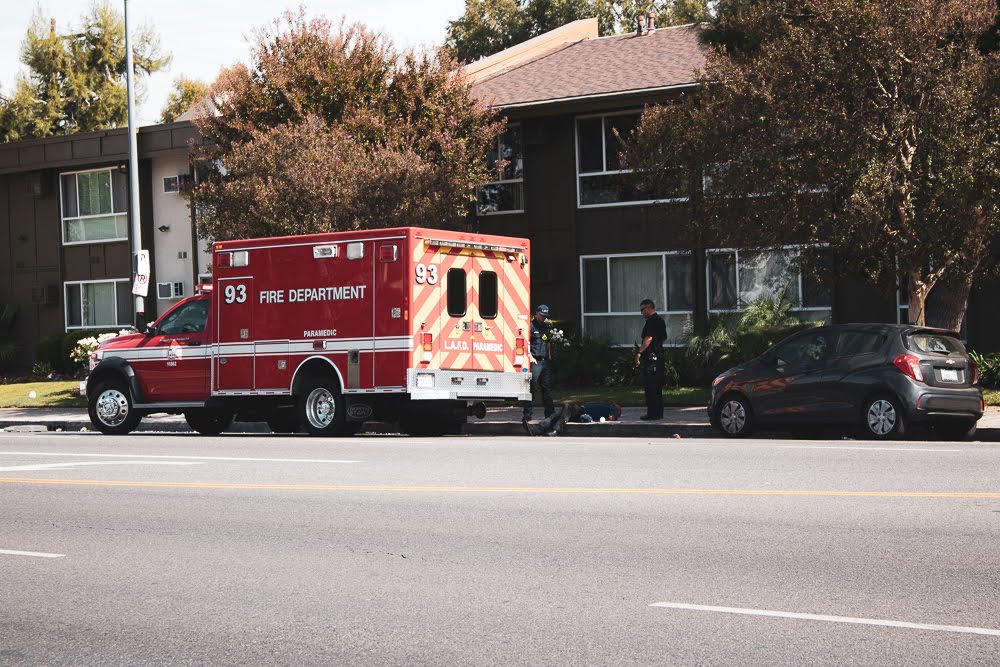TIPS TO ENSURE SAFE WINTER DRIVING
With winter fully upon us, the likelihood of experiencing snowy and slippery conditions while driving is high. Snow, ice, and other weather related hazards make even a routine daily drive challenging. According to the US Department of Transportation, more than 1,300 people are killed and over 116,800 are injured each year by auto accidents that occur on snowy, icy, or slushy roads. We wanted to share tips for safe winter driving. By following our list of winter driving safety tips, you can decrease your chance of suffering an auto accident.
-

PREPARE YOUR VEHICLE PRIOR TO THE WINTER SEASON
With the freezing temperatures, icy precipitation, and rough road conditions, driving during the winter can take a toll on your vehicle. Due to the additional wear and tear caused by extreme weather, prioritizing the maintenance of your vehicle is essential. This maintenance includes checking the wear on your vehicle’s tires, inspecting your engine fluid levels, and scheduling a battery check. An overlooked but simple inspection to make on your vehicle is a tire pressure check, which is essential to safe driving. Business Insider states, “once the temperature drops below 32 degrees, the air pressure in tires goes down and they’ll deflate”. The publication recommends constantly checking your tire pressure, which helps you maintain control of your vehicle during winter drives. Below is a list of checks, inspections, and maintenance to help winterize your vehicle:
- Since battery power drops as the temperature drops, test your battery.
- Test your vehicle’s heating system prior to temperature drops.
- Inspect the tread on your tires and replace if less than 2/32 of an inch.
- Check your tire pressure, which decreases with temperature drops.
- Ensure your wiper blades are not forming streaks on your windshield and replace if necessary.
- Add winterized windshield wiper fluid, which is rated for -30 degrees.
- Keep your gas tank at least half full to avoid gas line freezes.
STOCK YOUR VEHICLE PRIOR TO DRIVING IN WINTER CONDITIONS
Since winter conditions increase the chances of an auto accident, mechanical issue, or vehicle breakdown, it is essential to have specific tools and equipment to ensure your safety in an emergency. Most essential is stocking your vehicle with a spare coat, pair of gloves, and blanket for warmth in case your vehicle is stranded in the cold. It is also important to carry reflective equipment or bright colored markers to increase the visibility of your motionless vehicle, especially at night or during snowfall. Ensure your vehicle is equipped with the basic emergency tools that are essential all year, such as jumper cables, an ice scraper, a multipurpose utility tool, and tire changing equipment. A complete list of supplies to stock your vehicle will include:
- A properly inflated spare tire
- Tire changing tools (wheel wrench and tripod jack)
- Jumper cables
- A multipurpose utility tool
- Flashlight and extra batteries
- Reflective triangles and brightly colored cloth
- Compass
- First aid kit (gauze, tape, bandages, antibiotic ointment, aspirin, a blanket, non latex gloves, scissors, hydrocortisone, thermometer, tweezers, instant cold compress)
- Nonperishable, high-energy foods
- Drinking water
- Reflective vest
- Cell phone charger
- Fire extinguisher
- Duct tape
- Rain poncho
- Ice scraper
- Shovel
- Windshield washer fluids
- Spare clothes and blankets
-
REDUCE YOUR TRAVELING SPEED AND INCREASE SURROUNDING SPACE
Listed below are two simple adjustments that you can make on your drive to reduce the chances of suffering an accident:
- Reduce your travel speed.
- Increase your following distance.
These practices provide you more time to react to rough patches of road or losing control of your vehicle without causing a collision. Increasing distance from other drivers allows you more room to avoid accidents from those not practicing cautious driving.
-
CALIBRATE YOUR DRIVING IN A LOW-TRAFFIC AREA
Understanding the conditions in which you are driving is important for navigating through snowy or icy roads. Business Insider recommends slowing down and planning ahead so that you are not surprised by conditions. In the early stages of your snow or ice hindered travels, test your vehicle’s brakes to determine your slowing and stopping capabilities without using the anti-lock brakes. This calibration should be done in your neighborhood or another low traffic area.
AVOID DRIVING TOO SLOW OR COMPLETE STOPS
While driving at a high speed is unsafe, especially during bad driving conditions, driving at a slow speed presents its own dangers. A vehicle going below the speed of general traffic is a hazard, because that vehicle can be rear ended or create a swerving hazard. The dangers of driving too slowly especially increase at blind curves.
One of the best ways to stay safe on snowy or icy roads is to never stop, if avoidable. AAA states, “there’s a big difference in the amount of inertia it takes to start moving from a full stop versus how much it takes to get moving while still rolling.” By keeping your vehicle tires constantly moving, you can help prevent skids and spin-outs. This advice is especially helpful when driving up a snowy or icy hill, where stopping can lead to getting stuck or skidding. By practicing anticipatory driving, you can gain momentum on a flat roadway before hitting a hill, which will decrease the chances of getting stuck, spinning, or skidding.
USE CAREFUL CONSIDERATION WHEN DECIDING TO DRIVE IN INCLEMENT WEATHER
When winter weather makes driving hazardous, it is important to consider the necessity and safety of driving in the first place. Choosing to not drive on snowy or icy roads is the only option to ensure the avoidance of an auto accident. It is important to reconsider embarking in inclement weather if the purpose for driving can be canceled, postponed, or delayed. If travel is necessary, provide yourself extra time to reach your destination so you can reduce your speed. If you have extra time, warming your car prior to driving is important for maintaining your vehicle.
HAVE YOU SUFFERED AN AUTO ACCIDENT INJURY?
If you have suffered an auto accident injury, please reach out to our legal team at Spear Greenfield immediately. We offer a free initial consultation to learn more details about your accident and discuss your legal options. This consultation does not carry any pressure or obligation, just information. Call Spear Greenfield today or complete the form fill to schedule your fee consultation!
Call or text (215) 985-2424 or complete a Free Case Evaluation form













